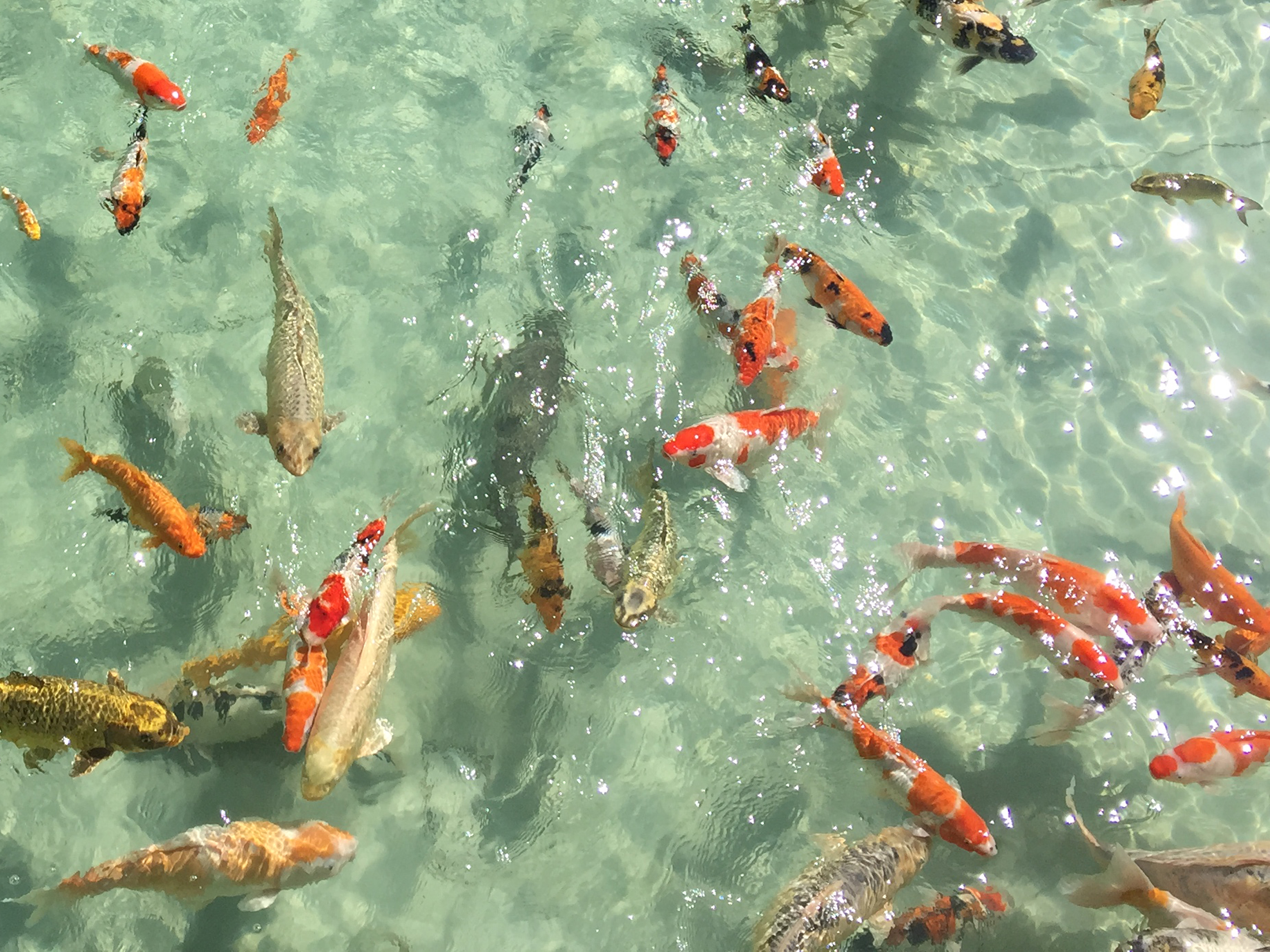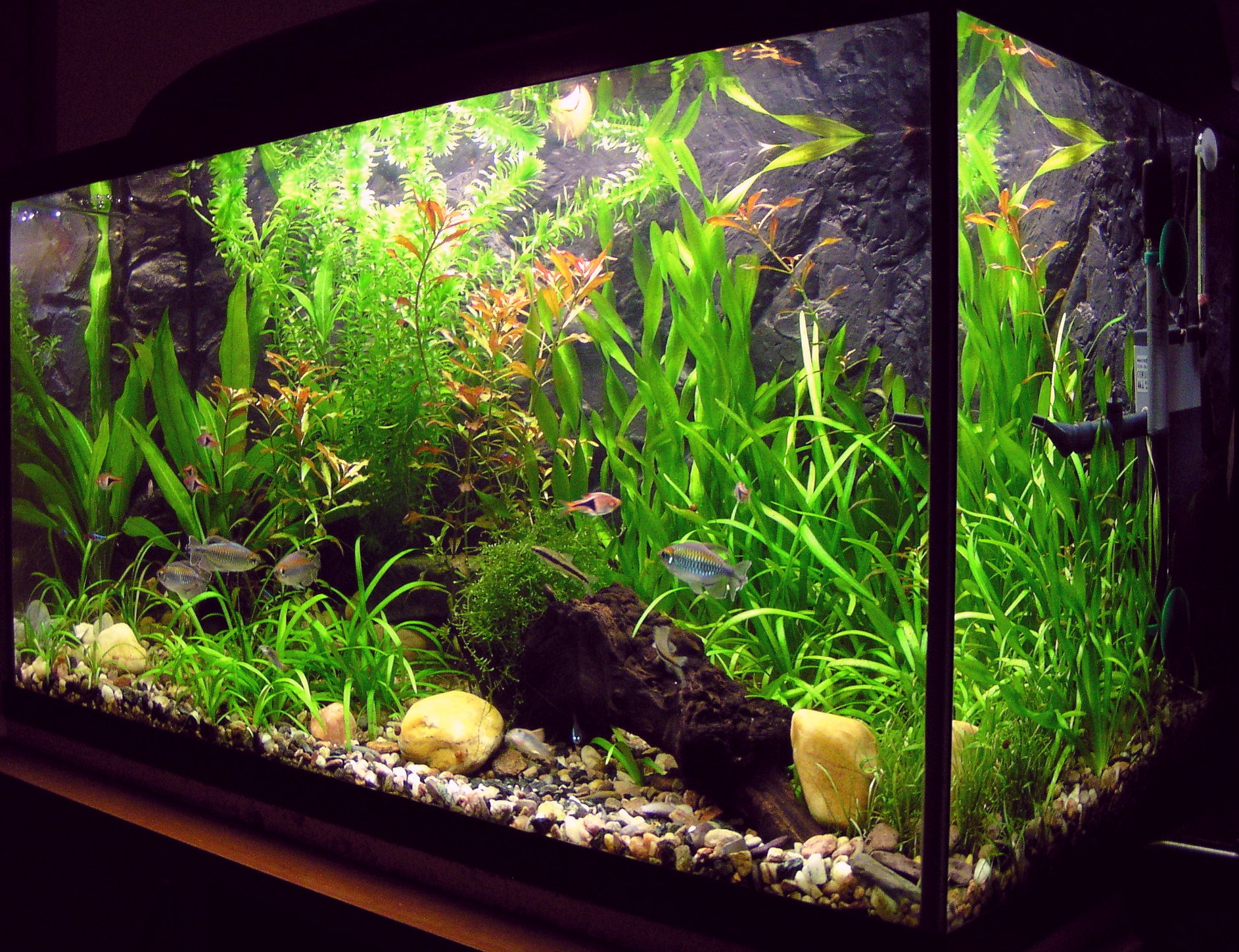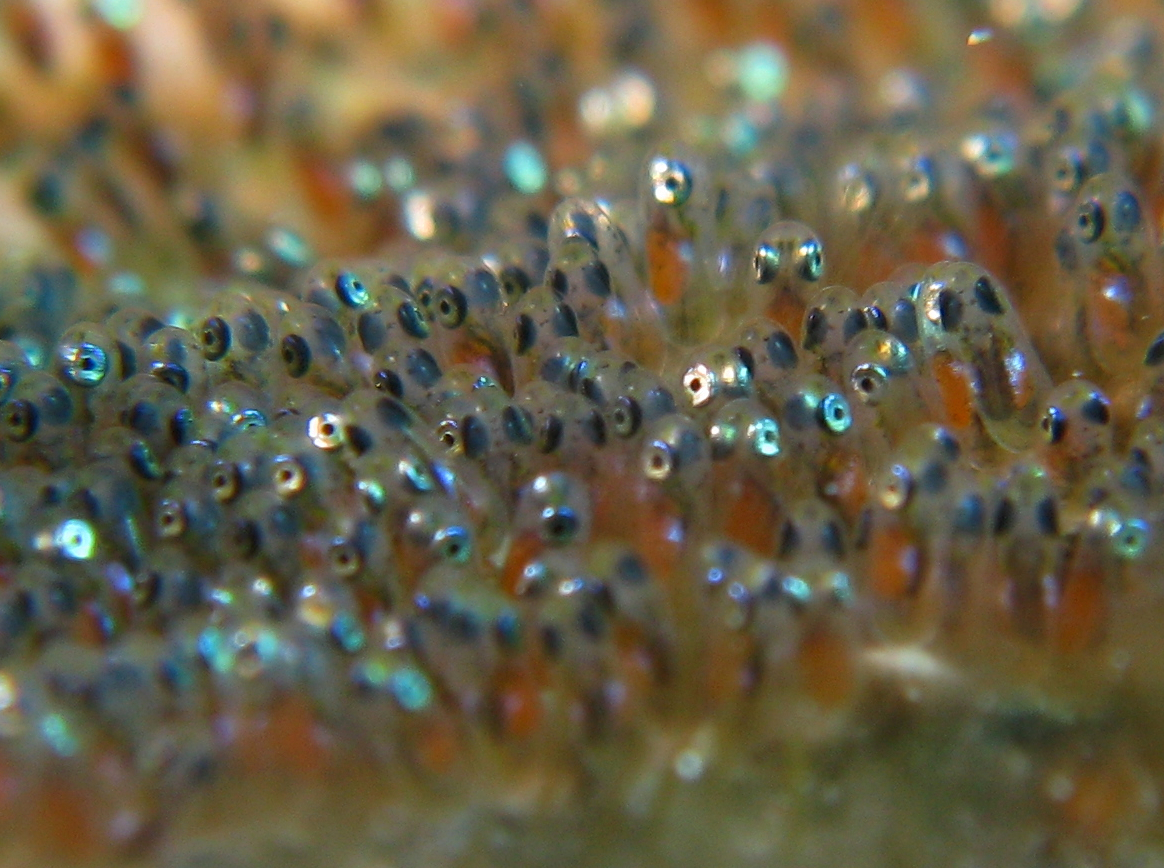|
Oliotius
The checker barb (''Oliotius oligolepis'') is a species of cyprinid fish endemic to creeks, rivers, and lakes in Sumatra, Indonesia. It has also been established in the wild in Colombia. The adult males have red fins with black tips. It will grow up to a length of TL. This species is the only known member of its genus. Etymology The genus name ''Oliotius'' is derived as a combination of a portion of the specific epithet ''oligolepis'' and its former genus name '' Puntius''. The common name "checker barb" (as well as such related names as "checkered barb", "chequer barb" and "checkerboard barb") derives from the black marks on its side similar in appearance to those found on a checkerboard. Taxonomic issue This species has sometimes been placed in the genus ''Barbus'' though '' Barbus oligolepis'' Battalgil, 1941 properly refers to another fish species that is only found in Turkey. Since Bleeker's ''oligolepis'' is not placed in ''Barbus'', both names are valid. Habitat Ch ... [...More Info...] [...Related Items...] OR: [Wikipedia] [Google] [Baidu] |
Barbus Oligolepis
The Marmara barbel (''Barbus oligolepis'') is a species of cyprinid fish endemic to Turkey where it is only known from fast flowing waters with substrates of stones or pebbles. This species can reach a length of SL. Taxonomic issue '' Oliotius oligolepis'' (Bleeker, 1853), a species of barb from Southeast Asia has at times been placed in the genus ''Barbus'' which would render the current species invalid as a junior homonym. However, since Bleeker's ''oligolepis'' species, originally in ''Capoeta'', is currently placed in the genus ''Oliotius'' and before that in ''Puntius ''Puntius'' is a genus of small freshwater fish in the family Cyprinidae native to South Asia and Mainland Southeast Asia, as well as Taiwan. Many species formerly placed in ''Puntius'' have been moved to other genera such as ''Barbodes'', '' D ...'', Battalgil's ''oligolepis'' species is available and valid. References oligolepis Fish described in 1941 Taxa named by Fahire Battalgil Freshwat ... [...More Info...] [...Related Items...] OR: [Wikipedia] [Google] [Baidu] |
Cyprinid Fish Of Asia
Cyprinidae is a family of freshwater fish commonly called the carp or minnow family, including the carps, the true minnows, and their relatives the barbs and barbels, among others. Cyprinidae is the largest and most diverse fish family, and the largest vertebrate animal family overall, with about 1,780 species divided into 166 valid genera. Cyprinids range from about in size to the giant barb (''Catlocarpio siamensis''). By genus and species count, the family makes up more than two-thirds of the ostariophysian order Cypriniformes. The family name is derived from the Greek word ( 'carp'). Biology and ecology Cyprinids are stomachless, or ''agastric'', fish with toothless jaws. Even so, food can be effectively chewed by the gill rakers of the specialized last gill bow. These pharyngeal teeth allow the fish to make chewing motions against a chewing plate formed by a bony process of the skull. The pharyngeal teeth are unique to each species and are used to identify speci ... [...More Info...] [...Related Items...] OR: [Wikipedia] [Google] [Baidu] |
Cyprinid
Cyprinidae is a Family (biology), family of freshwater fish commonly called the carp or minnow family, including the carps, the true minnows, and their relatives the barb (fish), barbs and barbel (fish), barbels, among others. Cyprinidae is the largest and most diverse fish family, and the largest vertebrate, vertebrate animal family overall, with about 1,780 species divided into 166 valid genus, genera. Cyprinids range from about in size to the giant barb (''Catlocarpio siamensis''). By genus and species count, the family makes up more than two-thirds of the ostariophysian order Cypriniformes. The family name is derived from the Greek word ( 'carp'). Biology and ecology Cyprinids are stomachless, or ''agastric'', fish with toothless jaws. Even so, food can be effectively chewed by the gill rakers of the specialized last gill bow. These pharyngeal teeth allow the fish to make chewing motions against a chewing plate formed by a Process (anatomy), bony process of the skull. The ... [...More Info...] [...Related Items...] OR: [Wikipedia] [Google] [Baidu] |
List Of Freshwater Aquarium Fish Species
A vast number of freshwater species have successfully adapted to live in aquariums. This list gives some examples of the most common species found in home aquariums. Siluriformes, Catfish Characiformes, Characoids Cichlidae, Cichlids Cyprinidae, Cyprinids Loaches Live-bearing aquarium fish, Live-bearers Killifish Anabantoidei, Labyrinth fish Melanotaeniidae, Rainbowfish Gobies and Eleotridae, sleepers Other fish See also *List of aquarium fish by scientific name *List of brackish aquarium fish species *List of fish common names *List of freshwater aquarium amphibian species *List of freshwater aquarium invertebrate species *List of freshwater aquarium plant species *List of marine aquarium fish species *List of marine aquarium invertebrate species Sources * Alderton, D. (2005). ''Encyclopedia of Aquarium and Pond Fish''. Dorling Kindersley. * Jennings, G. (2006). ''500 Aquarium ... [...More Info...] [...Related Items...] OR: [Wikipedia] [Google] [Baidu] |
Puntius
''Puntius'' is a genus of small freshwater fish in the family Cyprinidae native to South Asia and Mainland Southeast Asia, as well as Taiwan. Many species formerly placed in ''Puntius'' have been moved to other genera such as ''Barbodes'', '' Dawkinsia'', '' Desmopuntius'', ''Haludaria'', '' Oliotius'', '' Pethia'', '' Puntigrus'', '' Sahyadria'' and '' Systomus''.Kottelat, M. (2013)The fishes of the inland waters of southeast Asia: A catalogue and core bibliography of the fishes known to occur in freshwaters, mangroves and estuaries. ''Raffles Bulletin of Zoology, Suppl. No. 27: 1–663.''Pethiyagoda, R., Meegaskumbura, M. & Maduwage, K. (2012)A synopsis of the South Asian fishes referred to ''Puntius'' (Pisces: Cyprinidae).''Ichthyological Exploration of Freshwaters, 23 (1): 69–95.''Raghavan, R., Philip, S., Ali, A. & Dahanukar, N. (2013)''Sahyadria'', a new genus of barbs (Teleostei: Cyprinidae) from Western Ghats of India.''Journal of Threatened Taxa, 5 (15): 4932–4938.'' ... [...More Info...] [...Related Items...] OR: [Wikipedia] [Google] [Baidu] |
Maurice Kottelat
Maurice Kottelat (born 16 July 1957 in Delémont, SwitzerlandCommissioners: Dr Maurice Kottelat International Commission on Zoological Nomenclature (accessed 2014)) is a specializing in Eurasian freshwater fishes. Kottelat obtained a License in Sciences at the University of Neuchâtel in 1987 and in 1989 a doctoral degree from the |
Water
Water is an inorganic compound with the chemical formula . It is a transparent, tasteless, odorless, and Color of water, nearly colorless chemical substance. It is the main constituent of Earth's hydrosphere and the fluids of all known living organisms (in which it acts as a solvent). It is vital for all known forms of life, despite not providing food energy or organic micronutrients. Its chemical formula, , indicates that each of its molecules contains one oxygen and two hydrogen atoms, connected by covalent bonds. The hydrogen atoms are attached to the oxygen atom at an angle of 104.45°. In liquid form, is also called "water" at standard temperature and pressure. Because Earth's environment is relatively close to water's triple point, water exists on Earth as a solid, a liquid, and a gas. It forms precipitation in the form of rain and aerosols in the form of fog. Clouds consist of suspended droplets of water and ice, its solid state. When finely divided, crystalline ice ... [...More Info...] [...Related Items...] OR: [Wikipedia] [Google] [Baidu] |
Fish Described In 1853
A fish (: fish or fishes) is an aquatic, anamniotic, gill-bearing vertebrate animal with swimming fins and a hard skull, but lacking limbs with digits. Fish can be grouped into the more basal jawless fish and the more common jawed fish, the latter including all living cartilaginous and bony fish, as well as the extinct placoderms and acanthodians. In a break to the long tradition of grouping all fish into a single class (Pisces), modern phylogenetics views fish as a paraphyletic group. Most fish are cold-blooded, their body temperature varying with the surrounding water, though some large active swimmers like white shark and tuna can hold a higher core temperature. Many fish can communicate acoustically with each other, such as during courtship displays. The study of fish is known as ichthyology. The earliest fish appeared during the Cambrian as small filter feeders; they continued to evolve through the Paleozoic, diversifying into many forms. The earliest fish wi ... [...More Info...] [...Related Items...] OR: [Wikipedia] [Google] [Baidu] |
Fishkeeping
Fishkeeping is a popular hobby, practiced by aquarists, concerned with keeping fish in a home aquarium or garden pond. It is a practice that encompasses the art of maintaining one's own aquatic ecosystem, featuring a lot of variety with various water systems, all of which have their own unique features and requirements. Fishkeeping primarily serves as a token of appreciation and fascination for marine life and the environment that surrounds such, along with other purposes such as the pisciculture, piscicultural fishkeeping industry, serving as a branch of agriculture, being one of the most widespread methods of cultivating fish for commercial profit. Origins of fishkeeping Fish have been raised as food in pools and ponds for thousands of years. Brightly colored or tame specimens of fish in these pools have sometimes been valued as pets rather than food. Many cultures, ancient and modern, have kept fish for both functional and decorative purposes. Ancient Sumerians kept wild-c ... [...More Info...] [...Related Items...] OR: [Wikipedia] [Google] [Baidu] |
Freshwater Fish Of Indonesia
Fresh water or freshwater is any naturally occurring liquid or frozen water containing low concentrations of dissolved salts and other total dissolved solids. The term excludes seawater and brackish water, but it does include non-salty mineral-rich waters, such as chalybeate springs. Fresh water may encompass frozen and meltwater in ice sheets, ice caps, glaciers, snowfields and icebergs, natural precipitations such as rainfall, snowfall, hail/ sleet and graupel, and surface runoffs that form inland bodies of water such as wetlands, ponds, lakes, rivers, streams, as well as groundwater contained in aquifers, subterranean rivers and lakes. Water is critical to the survival of all living organisms. Many organisms can thrive on salt water, but the great majority of vascular plants and most insects, amphibians, reptiles, mammals and birds need fresh water to survive. Fresh water is the water resource that is of the most and immediate use to humans. Fresh water is not always pot ... [...More Info...] [...Related Items...] OR: [Wikipedia] [Google] [Baidu] |
Aquarium
An aquarium (: aquariums or aquaria) is a vivarium of any size having at least one transparent side in which aquatic plants or animals are kept and displayed. fishkeeping, Fishkeepers use aquaria to keep fish, invertebrates, amphibians, aquatic reptiles, such as turtles, and aquatic plants. The term ''aquarium'', coined by English naturalist Philip Henry Gosse, combines the Latin root , meaning 'water', with the suffix , meaning 'a place for relating to'. The aquarium principle was fully developed in 1850 by the chemist Robert Warington, who explained that plants added to water in a container would give off enough oxygen to support animals, so long as the numbers of animals did not grow too large. The aquarium craze was launched in early Victorian era, Victorian England by Gosse, who created and stocked the first public aquarium at the London Zoo in 1853, and published the first manual, ''The Aquarium: An Unveiling of the Wonders of the Deep Sea'' in 1854. Small aquariums are k ... [...More Info...] [...Related Items...] OR: [Wikipedia] [Google] [Baidu] |
Spawn (biology)
Spawn is the eggs and sperm released or deposited into water by aquatic animals. As a verb, ''to spawn'' refers to the process of freely releasing eggs and sperm into a body of water (fresh or marine); the physical act is known as spawning. The vast majority of aquatic and amphibious animals reproduce through spawning. These include the following groups: * Bony fishes * Crustaceans (such as crabs, shrimps, etc.) *Mollusks (such as oysters, octopus, squid) *Echinoderms (such as sea urchins, sea stars, sea cucumbers, etc.) * Amphibians (such as frogs, toads, salamanders, newts) * Aquatic insects (such as dragonflies, mayflies, mosquitoes) *Coral, which are living colonies of tiny, aquatic organisms—not plants, as they are sometimes perceived to be. Corals, while appearing sedentary or botanical by nature, actually spawn by releasing clouds of sperm and egg cells into the water column, where the two mix. As a general rule, aquatic or semiaquatic reptiles, birds, ... [...More Info...] [...Related Items...] OR: [Wikipedia] [Google] [Baidu] |







